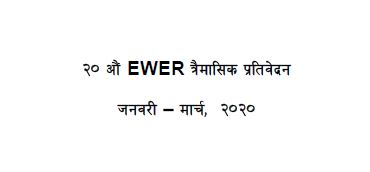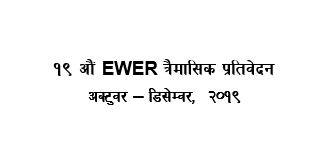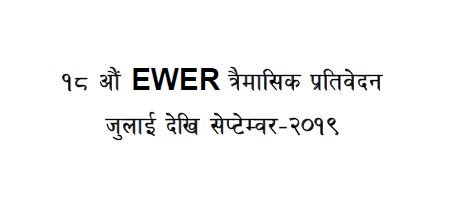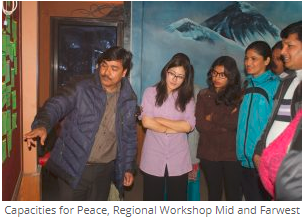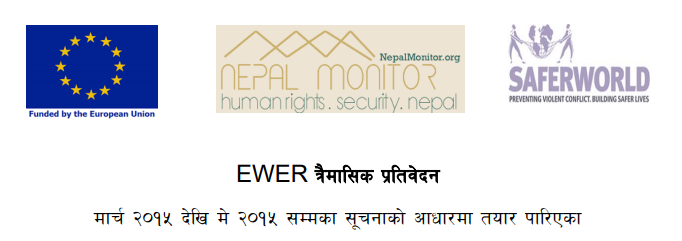Incident Reports
Justice, interrupted: Mohna Ansari's Oped on Transitional Justice
2018-12-21
So much has been written in the last year or so about Transitional Justice (TJ) but in my conversations on behalf of the National Human Rights Commission NHRC) with all people from various sections throughout Nepal, I get the strong impression that no one really knows what it is or where it came from. Those who understand it tend to be people with direct connections with it.
Transitional justice is not a formula for success and not something to be implemented according to a rule book. It is what you do when the crimes committed overwhelm the justice system. In Nepal, for example, we estimate that there were around 13,000 deaths, scores of people were wounded and still missing. But we are yet to know the exact figure. Lack of a concrete figure makes it difficult to give reparations to the victims. What’s more, strengthening the institutions that were damaged in many different ways become difficult too. But more importantly, this ambiguity around figures makes it difficult to gauge the truth.
One thing that unites all Nepalis is that we don’t want to go through such trauma again. But if we don’t fully know what happened, how can we avoid it? In 2006, the signing of the Comprehensive Peace Agreement urgently warranted a Truth and Reconciliation process to bring justice to the war-era victims. That need for truth has not gone away— it has only gotten stronger.
There is no rule book but there are rules and lessons from other similar experiences. The basic rules are that the truth and transitional justice process has to have legitimacy—people must think it is honest, otherwise it will prove futile. TJ will work only if those in charge are trusted. To do this, they must be independent and persons of good standing in society. The entire process must be transparent, too. Regrettably, since we have continually been deceived by our leaders, the citizenry find it hard to trust them.
Also, it would be imprudent to think we cannot benefit from the knowledge and experiences of the United Nations (UN) and some other international experts. But as the experience of the past 12 years has shown, holding flashy workshops in big hotels will not add much to the cause. While these events looks flamboyant, they have failed to produce any tangible results.
The need for transparency
Bhupi Sherchan once wrote that ‘This is a Land of Hearsay and Rumour’. In recent years, this seems to have become ever more true. Perhaps it is due to social media; perhaps due to the attempts of the powerful to restrict the freedom of the press and also of non-governmental organisations and civil society.
Nowhere is this lack of transparency more apparent s than in the struggle to overcome entrenched impunity. But rumours run wild when powerful forces act in secrecy. Some of the rumours going strong at the moment concern the uncontrolled activities of friendly diplomats in Kathmandu. For once, the nationalists are not denouncing this—in part because a lot of it seems to be at the request of these ‘guardians of national sovereignty’ themselves.
Just over a few weeks ago, there was a sponsored junket to Bangkok that apparently aimed at bringing together major political parties transitional justice. Funded by the Swiss government, 12 people, including six influential leaders from both the ruling party and the opposition party, Nepali Congress partook in the six day event. Yet, no details about the program has come to the fore—undermining basic norms of democracy and transparency. It’s ironic that the very people leading our TJ process are the ones who are reluctant to share details about deliberation that concerns the public.
The whole point of TJ is to allow the Nepali people to know what happened during the Maoist insurgency and bring justice and reparations to the victims. On a larger scale, the process should also lead to institutional reform along with ensuring that such tragedy is not repeated. Conveniently, some in the government and the international community seem to think that this can be done in a clandestine manner. But we, as a society, have gone through too much not to ask any questions anymore.
Deriving ‘home grown legitimacy’
Our leaders are proud of their ‘homegrown’ peace process. But ironically, its most successful moments were when the United Nations Mission in Nepal (UNMIN) was present in Nepal. This was also the time when the United Nations Human Rights Office (OHCHR) helped us cut through the hearsay and learn from their reports on the realities of everyday discrimination suffered by the majority of Nepalis.
In four years, the Truth and Reconciliation Commission, Nepal (TRC) and the Commission of Investigation on Enforced Disappeared Persons (CIEDP)have failed to produce any insights into the truth of what happened. They have ignored the comprehensive UN Conflict report of 2012, which details war crimes and all the OHCHR thematic reports on police violence, extrajudicial killings in the Tarai, among other issues.
The current process lacks the legitimacy that is needed to convince people that the truth is being honestly sought and revealed. That legitimacy can only come from a transparent TJ process —open to public scrutiny. It must also allow space for feedback from all victims.
This has to be led by persons of public standing and integrity—those who have gained the public trust. It cannot be led by people on government or party payrolls. Independence is not up for bargain here.
Human rights defenders and civil society actors have been unwaveringly clear in their choice over a decade. Transparency and accountability are needed for genuine participation and for genuine national ownership. The alternative is a grim future with an perpetually incomplete peace process.
Ansari is the spokesperson at the National Human Rights Commission.
